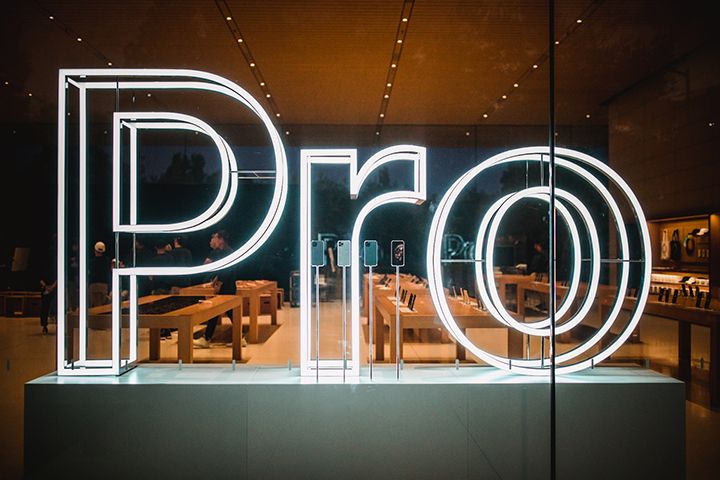Should We Build or Buy Our ETRM Solution? 5 Questions to Guide Your Decision

Are you weighing your options for a new energy trading risk management (ETRM) platform? You might be looking to replace the incumbent legacy system - the workhorse ETRM that has been the mainstay at your company for years. However, it is outdated, with diminishing value for your team’s growing needs. You could be using spreadsheets – hey, who doesn’t love a good spreadsheet? – but you may find it harder and harder to maintain and adapt. You may also be thinking about the possibility of building an in-house ETRM platform.
On one hand, you don’t need to go through an extensive purchase process if you build a solution – that means no discovery calls, demos, or long contracts. A homegrown solution can be more simple and customized (depending on your needs and the complexities of your business). Sure, it might seem like the easy answer, but there are always multiple sides to the decision process that are important to consider.
In this blog post, we’ll weigh the pros and the cons of building vs. buying your next ETRM platform with the most important questions to consider. It may feel like comparing apples to oranges, but we'll help you understand the tradeoffs between these two options and make the best choice according to your business needs.
Here are the five most important questions when deciding whether to build a trade risk management platform or buy a commercial ETRM solution:
- Question 1: What are your technical requirements?
- Question 2: How quickly do you want to use the ETRM?
- Question 3: How much budget can you allocate to this ETRM project?
- Question 4: How big is your company?
- Question 5: Does your tech team have extensive experience managing large, custom software projects?
Question 1: What are your technical requirements?
Consider your business goals and how your ETRM software can help you achieve those.
Ask yourself:
- Do I need a highly customized solution that accommodates every deal?
- Do I use standard analytics, or are they uncommon in the industry?
- Do I need software that’s mega-optimized for my team's efficiency?
If the answer to these questions is yes, building in-house may be a good option. Building a custom ETRM platform is great for companies looking for highly specialized solutions.
However, while an in-house-built ETRM will give you complete control over its functionality, you may not have all the features or modern user experience of a commercial solution.
How does a packaged ETRM compare?
Unless your team requires a specialized solution that meets every deal and business requirement, a commercial solution may suit you just as well. The best ETRM solutions are continuously innovating based on industry advances and best practices - which means you don’t have to. The fundamental capabilities of most ETRMs on the market include:
- Deal capture
- Near real-time position, P&L, MtM
- Advanced analytics, such as VaR
- Trade, market, and credit risk management
- Dozens of integrations
Do you still need some customization for deal capture or reporting? That's okay, too. Commercial ETRM solutions can still be customized in many ways; but there's less of a need for customization because the software is standard for companies across the industry.
An ETRM vendor can configure the software to your needs, although an in-house solution would certainly give you more options if you have a need for an ultra-customized system. Of the solutions on the market, SaaS ETRMs have more out-of-the-box functionality, while on-prem solutions require more customization and are more difficult to update.
Question 2: How quickly do you want to use the ETRM?
Speaking of customizations, a key point to consider is the more requirements you have for a purchased ETRM platform, the longer your implementation can take. However, not all software solutions require the same implementation timeline. You could be up and running in months, or you might be looking at a multi-year implementation.
Let's say you want your software implemented ASAP - anywhere between a few months to a year. Your best options are an in-house-built or a multi-tenant SaaS ETRM. The shared cloud infrastructure of a SaaS ETRM enables a smoother, quicker, and more structured implementation. As long as you don't need a ton of customizations, the modular nature of SaaS ETRM implementations makes them faster and more manageable.

For in-house solutions, even a smaller IT department can quickly build a targeted solution, assuming they know the business well. It may not be as full-featured as a commercial ETRM, but it will probably get the job done for a particular business need you have to solve. If you want more than a basic solution, it'll take a development team a little longer to build it out - up to a couple of years.
You can get the customizations you need, just in a longer timeline. However, you may encounter roadblocks if your business requirements change over time. If they do, your in-house ETRM may be optimized specifically for your old needs... not your new ones.
Question 3: How much budget can you allocate to this ETRM project?
Now for one of the most critical questions - which option saves (or costs) the most money? Well, it depends. Here's how we'd break it down:
- In-house solutions don't run as high but could go over budget
- The best commercial solutions anticipate costs upfront
- Outdated, monolithic solutions can end up costing the most
Since these older solutions operate on decades-old software, implementation timelines could go on indefinitely, and costs can balloon into the millions. On top of that, you'll probably have to hire consultants to assist with implementation. Some of these outdated solutions have cost companies tens of millions of dollars to implement. That doesn't even include the yearly upgrade and maintenance fees you'll pay.
In the case of building an ETRM – while you may not rack up many external costs, your internal costs can be substantial. We'd recommend a dedicated IT/development team and project manager to ensure your budget, goals, and timeline stay on track. You could also hire consultants, but they may not know your business as well as an internal team.
With the best commercial ETRM solutions, your investment will drive more value for your business in terms of:
- Responsive Support: An implementation team of industry SMEs led by an expert project manager who is there for you before and after implementation.
- No Hidden Fees: Implementation, maintenance, and other fees are all included in a fixed-fee package.
- Flexible Implementations: SaaS ETRM implementations are modular, so vendors can anticipate how much time and budget you'll need to allocate upfront.
- Frequent Updates: SaaS ETRMs can push updates automatically to every customer at once every couple of weeks due to their cloud-native infrastructure.

Question 4: How big is your company?
The size of your company influences how many deals you track and how many people need access to the system. A robust portfolio increases its complexity, so you'll have to determine what your software needs to monitor and what functionality is “enough” for your team.
Some commercial software may not be suited for the complexity of your portfolio or the amount of trade data you need to track, so optimization of your trade and risk management should be a key consideration. Ideally, an ETRM platform should be able to quickly scale and innovate as your business needs change.
Similarly, you need to determine if your tech team has the bandwidth to create software that can handle the amount and complexity of your data. Otherwise, you'll have to spend even more money on external consultants to fill your internal gaps.
Your tech team could create a basic solution if you're not a giant company with complex portfolio management needs. However, there are plenty of ETRM software options on the market that can handle your data with advanced tools and features an in-house ETRM won't offer. On top of that, commercial cloud-native solutions are reliable and highly scalable, so you don't have to worry about outages or slow load times.
Question 5: Does your tech team have extensive experience managing large, custom software projects?
What are some of the table-stakes necessities for building software in-house?
- A technology department that understands your business, as well as its current and evolving needs
- An internal engineering team that excels at developing software
- The resources necessary to build (and maintain) software that meets your requirements
If you have these key pieces in place, then building an ETRM platform in-house may make sense for you; but we advise you to keep your requirements as simple as possible at the beginning. Keeping it simple can save you a ton of time and money -- as long as you don't resort to solely using spreadsheets!
You may subject your team to delivery risks if your company doesn't meet these criteria. In that case, buying could be the perfect option for you. With all of the great ETRMs on the market, you can invest in a best-in-class platform, complete with everything your team needs to be successful.






